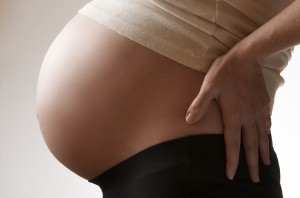Improving your Fertility Naturally and Mercier Therapy
Our son, was conceived via natural cycle in-vitro fertilization following a ten year fertility journey. We tried many paths and suffered many failures. This past weekend I traveled to Chicago to study Mercier Therapy. A therapy I wish I had myself ten years ago. Mercier Therapy is a deep, pelvic-organ visceral manipulation. It is intended to increase blood flow within the pelvis, and improve inappropriate position of reproductive organs. This type of therapy is used for women who are having pelvic pain, trying to conceive, have undergone pelvic surgery or a procedure that may have created adhesive type scar tissue within the pelvis. Scar tissue can cause diminished blood flow, and also cause the delicate reproductive organs to become entangled leading to both pain and poor organ performance. Which may result in diminished fertility.
For a woman trying to conceive there is nothing more stressful than not getting pregnant in a timely fashion. In the United States the infertility label is given after one year of unsuccessful trying. Often times during this initial year, the couple is left to their own devices, having little or no support with their attempts. After one year, and sometimes during the first year the couple may be offered prescription medication to induce ovulation and will begin multiple diagnostic tests. For many women, infertility leads to anxiety and depression. Mercier Therapy provides an atmosphere where a woman will be supported, both physically and emotionally during her fertility journey.
Reproductive medicine has become a go to method for infertility in our country. It is difficult not to accept the treatment in hopes that a baby might result. Often though, the statistics are low, and the procedures and prescriptions are more dangerous than many women understand. Being no stranger to “unexplained infertility” and having my son following a successful natural cycle IVF, I understand those emotions all to well. Having taken Mercier training this past weekend, I too may have benefited from it and may have avoided IVF. Beautiful little boy in arms, I know I am one of the lucky ones.
Mercier Therapy concluded a four year, evidence based research study in September 2012, indicating an 83-percent pregnancy success rate. The abstract, “Mercier Therapy Helps Infertile Women Achieve Pregnancy” was published in the spring 2013 edition of Midwifery Today. In contrast the success rates of stimulated IVF cycles are averaging 27 percent. When time is taken to improve the function and position of the pelvic organs, they are able to function to their full potential in creasing the odds of a pregnancy.
In addition to fertility struggles, women who have dealt with any of the following may suffer from pelvic pain: pelvic surgery such as: laparoscopy, laparotomy, D&C, LEEP, abortion, cystocele or rectocele repair, c-section, or hysterectomy, vaginal childbirth, sexual abuse trauma, urinary tract or yeast infection, endometriosis. Chronic pelvic pain can be debilitating and difficult to handle on a daily basis. Pain can be the result of ligament imbalance leading to poor organ position, and scar tissue following surgery. Mercier Therapy seeks to identify these imbalances and increase blood flow, motion and function. Resulting in reduction of pain, and an overall improvement in well being.
The road to having a baby is sometimes a long one. Pelvic pain and infertility leaves many emotional wounds and can leave a woman experiencing negative emotions toward her reproductive organs or even feeling disconnected all together. Becoming reconnected to our reproductive organs in a safe, gentle and comforting atmosphere can be one of the first steps toward welcoming a baby into the womb.





